JDS Labs El DAC II+ Balanced – Higher Resolution and Better Connectivity
JDS Labs El DAC II+ Balanced is a $299 USD DAC designed by JDS Labs and part of their Element series of products. It will be compared to other high-end DACs, including SMSL DO200 MKII (469 USD), HIFIMAN EF400 (599 USD), Pro-Ject Dac BOX DS (430 USD).
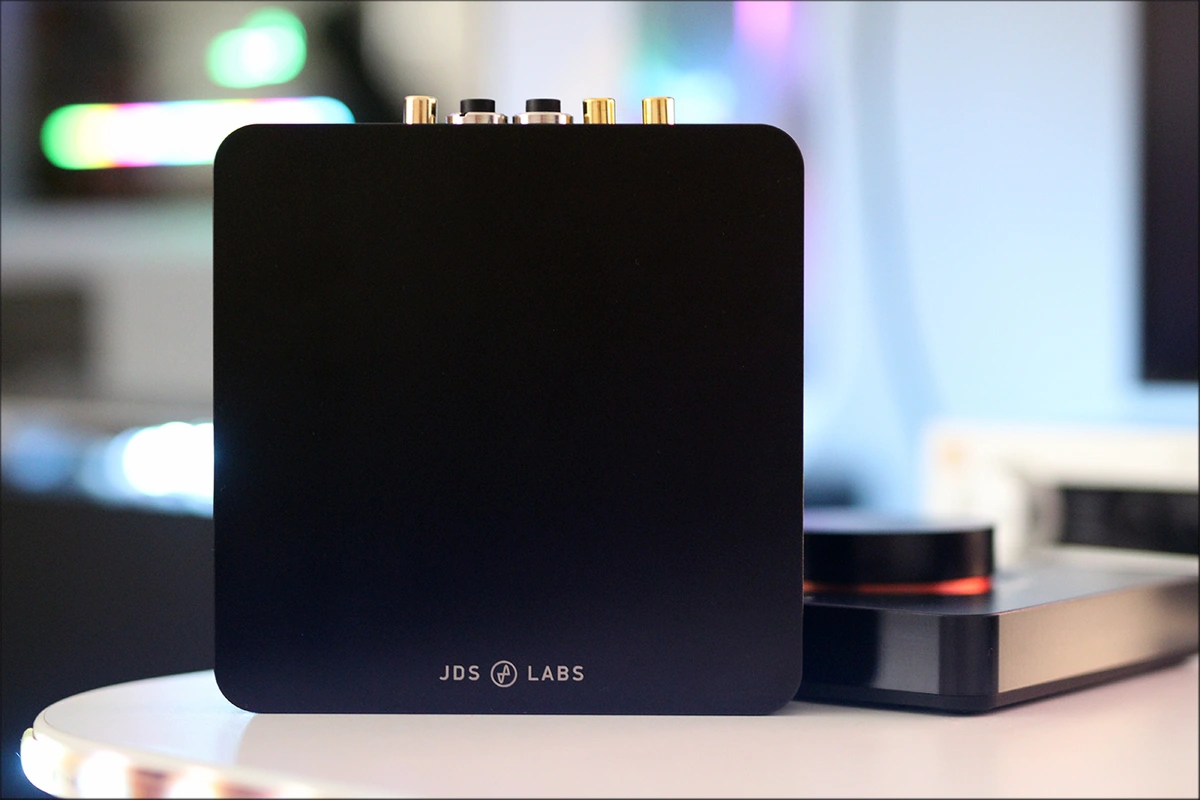
Introduction
JDS labs was founded by Mr. John Seaber in 2007 in his bedroom, disappointed by the lack of power of his iPod, and the lacking bass response in the headphones, when he hacked Chu Moy’s open source portable headphone AMP and added a bass boost circuit. This evolved in what we see today as a leading developer of high fidelity headphone amplification and digital to analog conversion technology. The most interesting aspect of JDS Labs products is that even now they are engineered, machined, assembled all in the home-owned facilities in Collinsville, Il, USA, making them a fully american product, with strong support, outstanding warranty, and great design. I have experience with other JDS Labs products, but there’s no connection between us beyond me having reviewed some entry-level products they designed.
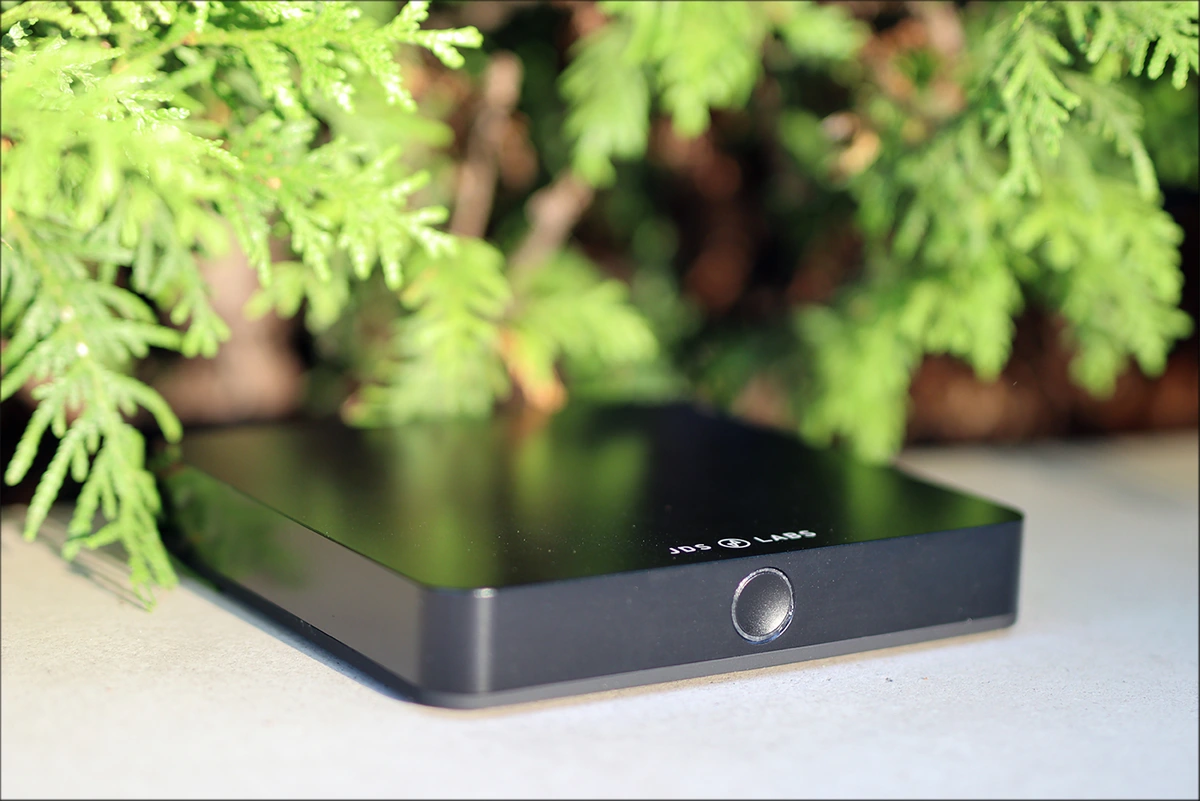
It should be noted that I have absolutely no affiliation with JDS Labs. I’d like to thank JDS Labs for providing the sample for this review. This review reflects my personal experience with the JDS Labs El DAC II+ Balanced / Element DAC II Plus Balanced . Every opinion expressed is mine and I stand by it. The purpose of this review is to help those interested in JDS El DAC II+ Balanced find their next music companion.
Product Link
You can grab one from www.amazon.com here: https://amzn.to/3U1ZOz6
If you’re in the UK, you can grab one from www.amazon.co.uk here: https://amzn.to/3OtuZ5w
And if you’re from Europe, you can grab one from www.amazon.de here: https://amzn.to/3VoJ8mP
Build Quality/Aesthetics/Features
If you’ve read my previous reviews on JDS Labs products, you probably know that the Atom series comes in a plastic chassis, which offers good reliability, a fun form factor, and doesn’t get too hot, so it is interesting to see the company now using fully metallic chassis for the El DAC II+. The name of the device is Element DAC II+, which is kinda funny because I always saw it as El DAC, like a Spanish Digital To Analogue Converter, with a tiny mexican hat and some maracas besides.
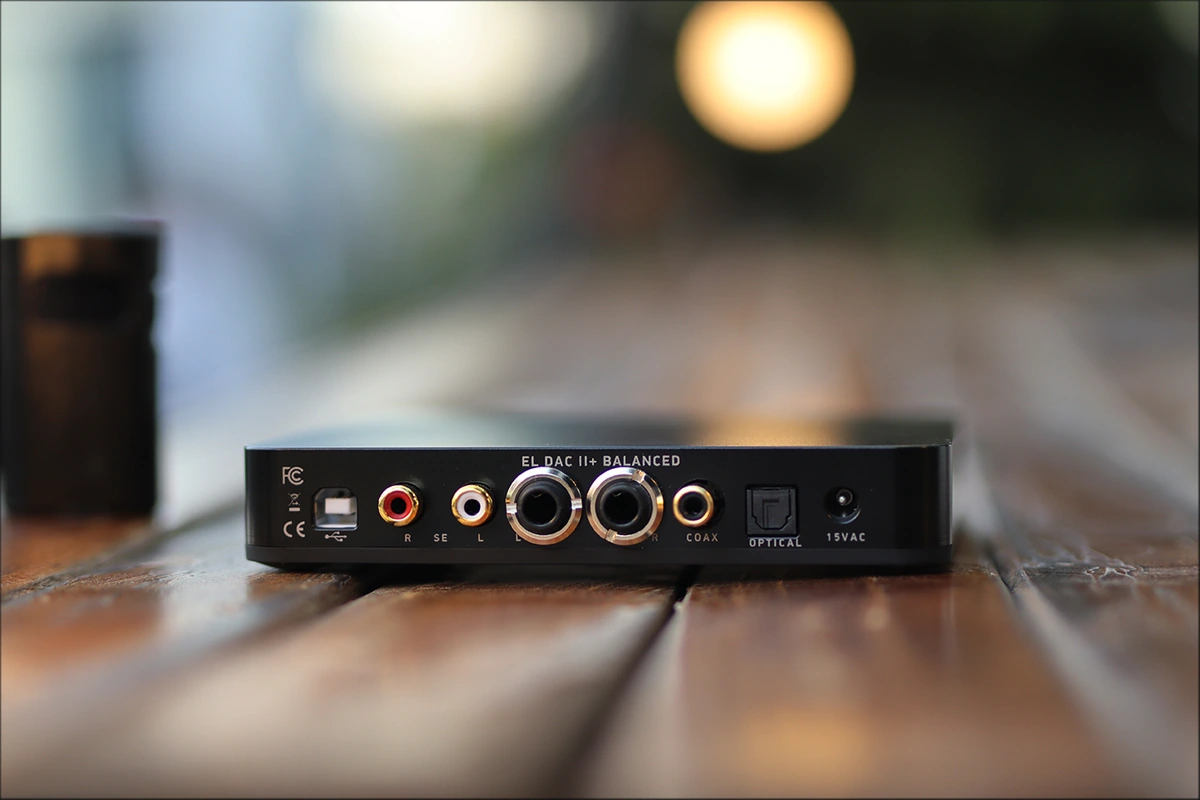
The device is really solid, and the DAC itself has been my main DAC for the past months, growing on me well thanks to its sonic performance, simple but effective design, and most importantly, low height on the desk, so it doesn’t obstruct my view on my display. The unit is extremely short, but has a distinctive LED light ring around the touch button used to switch the inputs of the El DAC II+. The official weight of the unit is noted to be 370 grams on the website, and it comes with rubber feet so it does not slide off your table while you’re enjoying your favorite music.
There is no volume control on the EL DACII+, so you’ll have to use an amplifier that has volume control, but most speaker and headphone AMPs will have one, especially the EL AMP II+ from JDS Labs. El DAC II+ gets a bit warm during usage, but it is not something you have to fear. The DAC gets quite hot if you have El AMP II+ stacked on top of it, but this is not the case if you have cables connected to the AMP, but if no cables are present, then the AMP gets quite warm, and the DAC ends up getting warm too. I have the Balanced version of both, which uses 6.35mm audio cables, which are common, but I still had to order them and waited a few days for them to arrive.
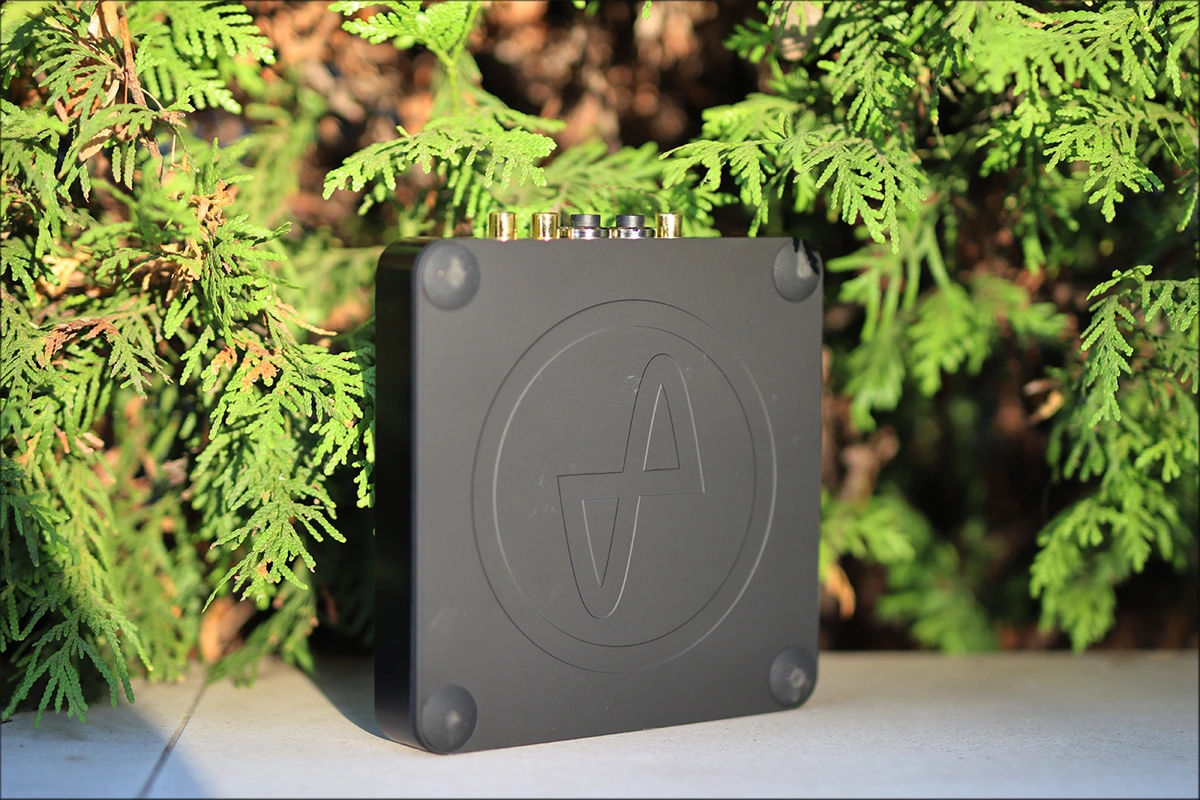
Now, El DAC II+ has a few interesting features, including MEMS Oscillator, an SiTime MEMS Oscillator for offering pristine Jitter. It also comes with USB Audio Class 2, having enough bandwidth for 32 Bit / 384kHz PCM signals. This is done over a custom XMOS XU208 UAC2 Engine. You can upgrade the firmware of El DAC II+, and it has relay muting while it starts up, so you don’t get feedback while it is turning on and off, so it won’t damage any headphones or speakers. The power is external, and provided by an AC transformer that has 14 regulators, and ensures consistent rail voltage and low ripple level. You can add a Bluetooth 5.1 module to receive wireless signals, but it won’t sound as good as the USB input. The Bluetooth module supports SBC, AAC and aptX, as well as aptX HD and aptX LL.
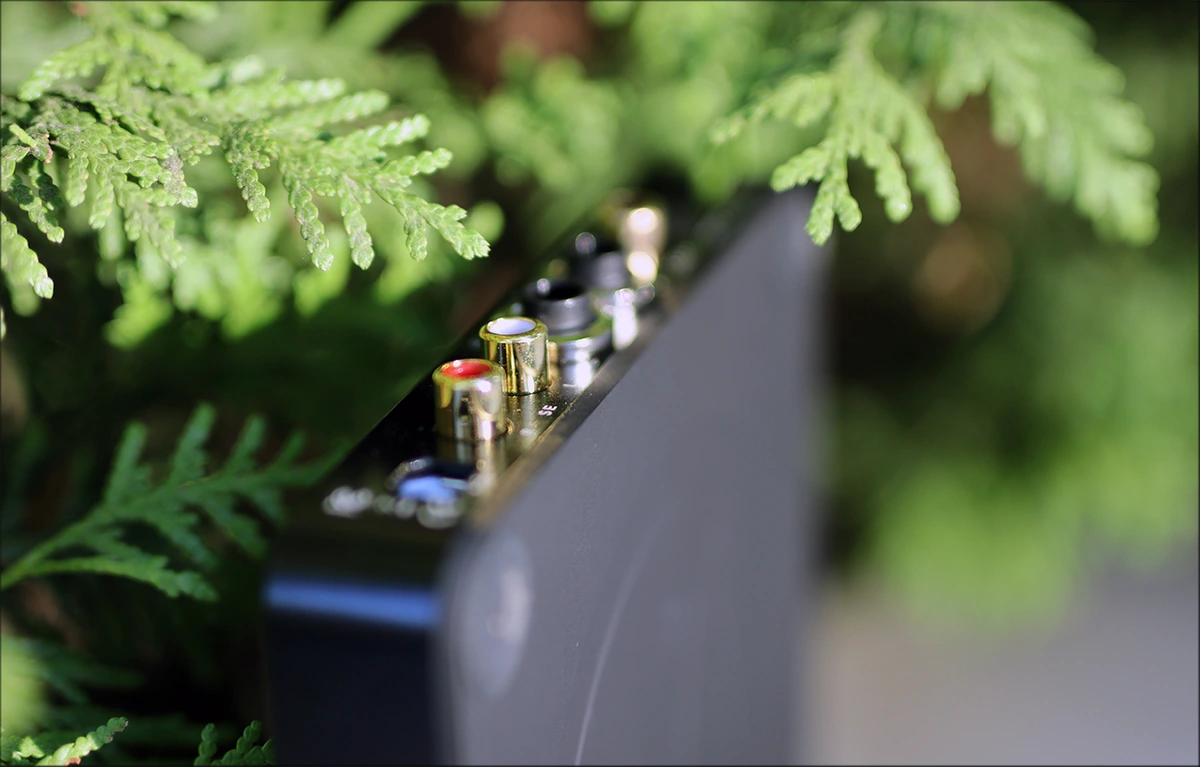
Diving deeper into the technical specifications of El DAC II+ Balanced, we have three inputs, USB, Optical and Coaxial, and I tested both Optical and USB, both sounding the same, which is superb. The USB Input doesn’t have any noise, and it comes with an optical cable, and a USB Cable, so you don’t have to worry much about it. There is a difference between the Balanced and the Single Ended RCA output of El DAC II+ Balanced, the SE output has a 2.0 VRMS output, while the Balanced Output has a 4.0 VRMS output. I have successfully kept both connected to two outputs: the SE one to Cyrus One Cast to power my KLH Model Five Speakers, and the TRS Balanced Output connected to JDS Labs El AMP II+ Balanced. I noticed no downgrade in signal when having both outputs connected, and I noticed no problems with any of the inputs, everything is crystal clear, no noise in any situation, and the whole DAC is designed like a tank, with a solid metallic shell.
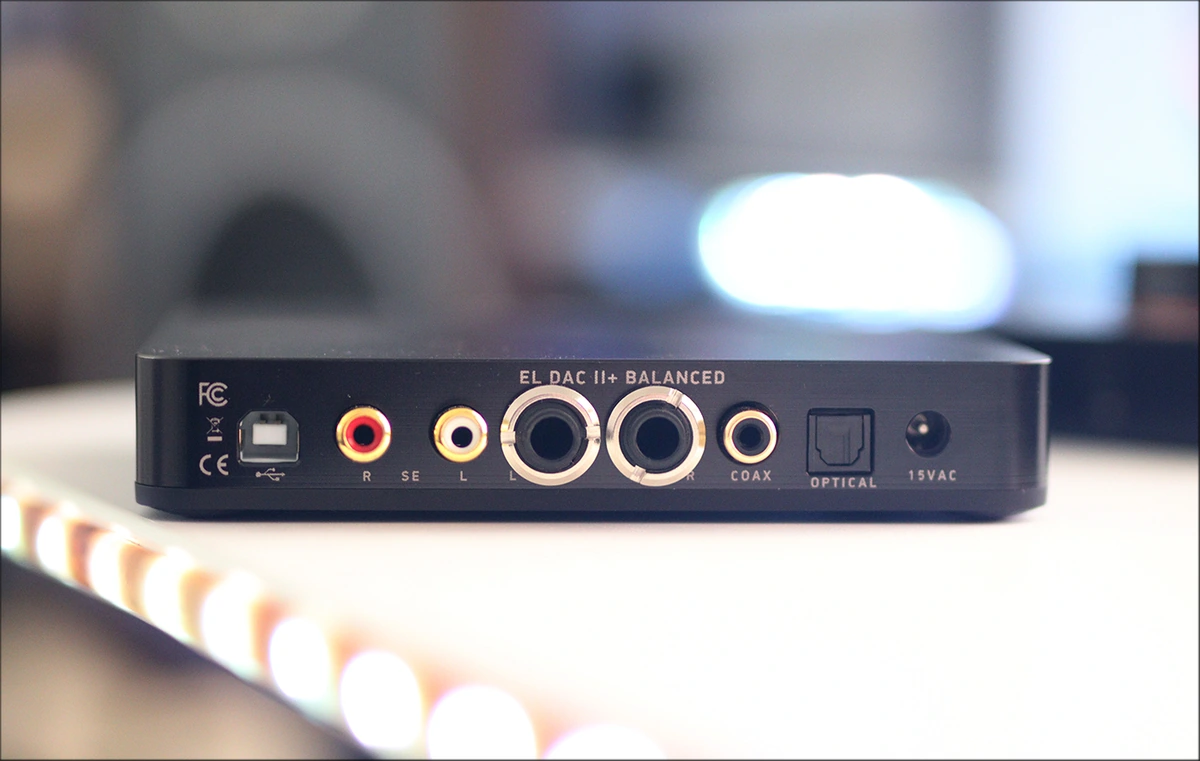
If technical numbers give you a nice chill in the body and brain, El DAC II+ Balanced has a SINAD of >112 dB, a SNR >117 dB, a Dynamic Range of 120 dB, a Crosstalk of -132dB, and USB Jitter as quiet as -130 dB. Basically, it performs as good as some ~5000 USD DACs at a technical level.
Sound Quality
The main ways I’ve used JDS Labs El DAC II+ Balanced have been as a DAC, powering external Amplifiers, including Cyrus One Cast, which is powering either KLH Model Five Speakers, or NHT C3. The other scenario has been with El DAC II+ powering El AMP II+ Balanced, which has been powering a multitude of IEMs and Headphones, including HIFIMAN HE1000 V2, HIFIMAN Ananda, Mr Speakers Aeon Flow 2 Noire, Spirit Torino Super Leggera, FiR Audio NE4 IEMs, Westone MACH 60, and Audeze MM-500. Not only does El AMP II+ have superb driving power, but also a natural sound, but let’s keep the EL AMP talk for its own review, so I want to describe EL DAC as being super transparent, clean and clear, crisp, and ultra detailed. For a DAC, the most important aspect will be how silent it is as a DAC as any signal and noise it has will be passed to the AMP, which will be really audible.
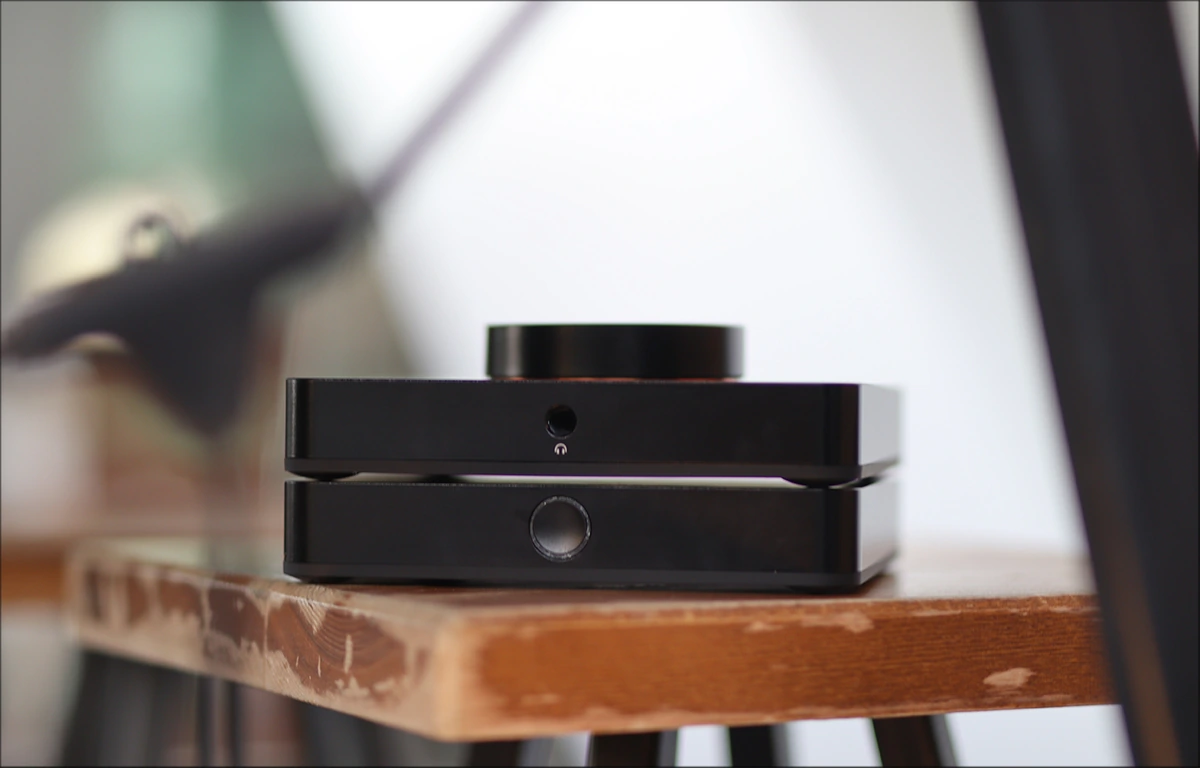
Happily, EL DAC II+ Balanced is extremely quiet over both the Single Ended and over the Balanced outputs, it has a really good control, and you won’t hear random beeps and boops while using it. I’ve had this problem with some sources, especially over the Single Ended output, for example I noticed it when comparing EF400 to El DAC II+ Balanced, as EF400 has some electronic noise (when moving the mouse, EF400 plays a very quiet high pitched sound, while EL DAC II+ Balanced is purely silent). The general sound of EL DAC II+ Balanced is also very colorless, so it doesn’t add or take away anything from music, it presents music exactly as it is, with perfect weight, presence, and a very linear tuning. While most DACs are linear and don’t have any particular tuning or coloration, EL DAC II+ Balanced is really linear.
The bass of EL DAC II+ is remarkably quick and clean, and deep. The transparency is perfect, and while it has a fully linear presentation, it surely presents bass with no roll off, and if your AMP and Headphones / Speakers can present the bass, El DAC II+ will do so too. I can say for sure I’m in love with the nuance and depth it has, but if you’re looking for something warm or thick sounding, EL DAC II+ surely won’t be it, it is crisp, clean and linear in the lows.
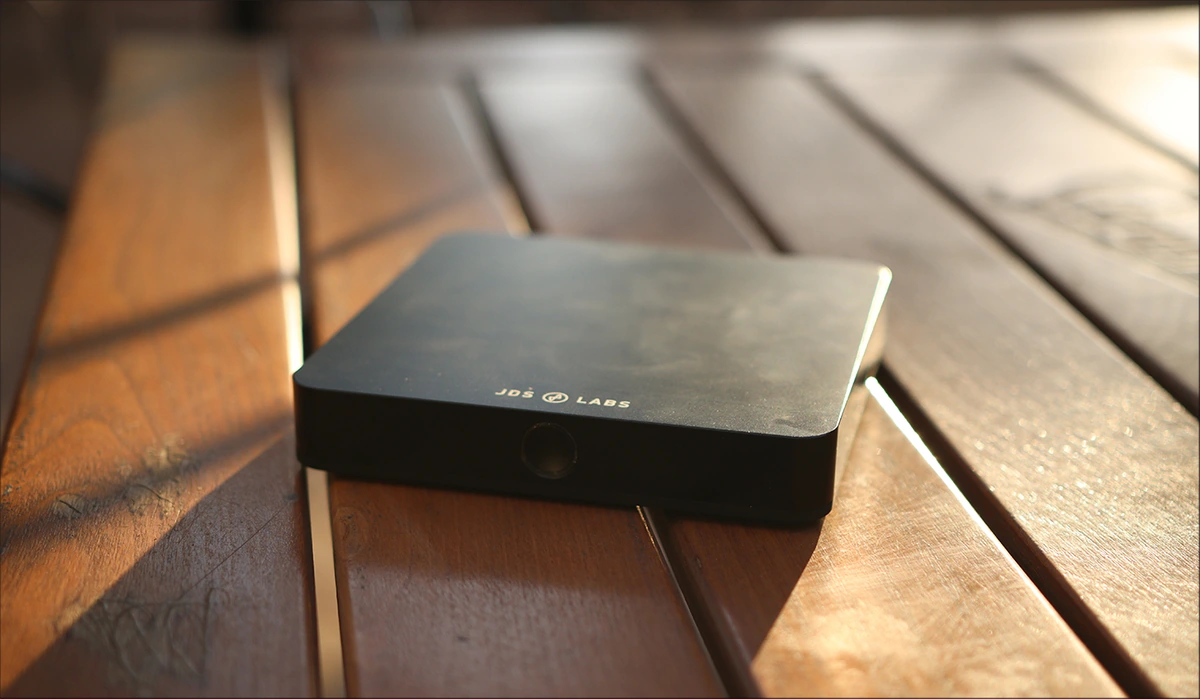
The midrange inherits the same clarity and precision that the low end has. It has excellent nuance, perfect timing and a no-noise policy for all frequencies, but a good amount of dynamics and a wide, holographic soundstage. I love the fact that EL DAC II+ has no coloration, as it makes it really easy to pair it with any amplifier and headphones, without having to worry that it will affect the sound, instead it does what a DAC is supposed to do, translate the digital data to an analogue format and pass it to the AMP. You can hear detail and background information extremely well when listening to EL DAC II+, and you never have to try to find a background guitar, it has outstanding instrument separation and clarity. Drums are placed all across the sonic scape, and width is outstanding. Depth is natural, and things don’t sound in your head, but don’t scatter too far away from the listener.
The treble of Element DAC II+ is also surprisingly good, extended as high as the highest octaves, with no rolloff, no bit of detail is spared, and everything is presented to the listener. Basically, if the song is smooth, it will sound smooth, if the sound is sharp and harsh, it will be sharp and harsh, El DAC II+ does play the role of an open window and a perfect DAC and carries over everything the song is supposed to have, without keeping anything away from you, as a listener, or coloring the sound in any way. I can’t emphasize this enough, but using it for my Cyrus One Cast + KLH Model Five setup, it is much clearer, much cleaner and much more detailed and has a more holographic presentation than if using the DAC inside of Cyrus One Cast. The difference is so large that it feels like a huge upgrade, and while I keep mentioning this, One Cast is a superb Integrated Stereo Amplifier, but the DAC inside of EL DAC II+ is on another level in clarity and resolution, and it is easily audible. The treble is especially cleaner, sparklier and has a more present / forward presentation. Naturally, it is also much better than the JDS Labs ATOM DAC+ which I reviewed in the past.
Comparisons
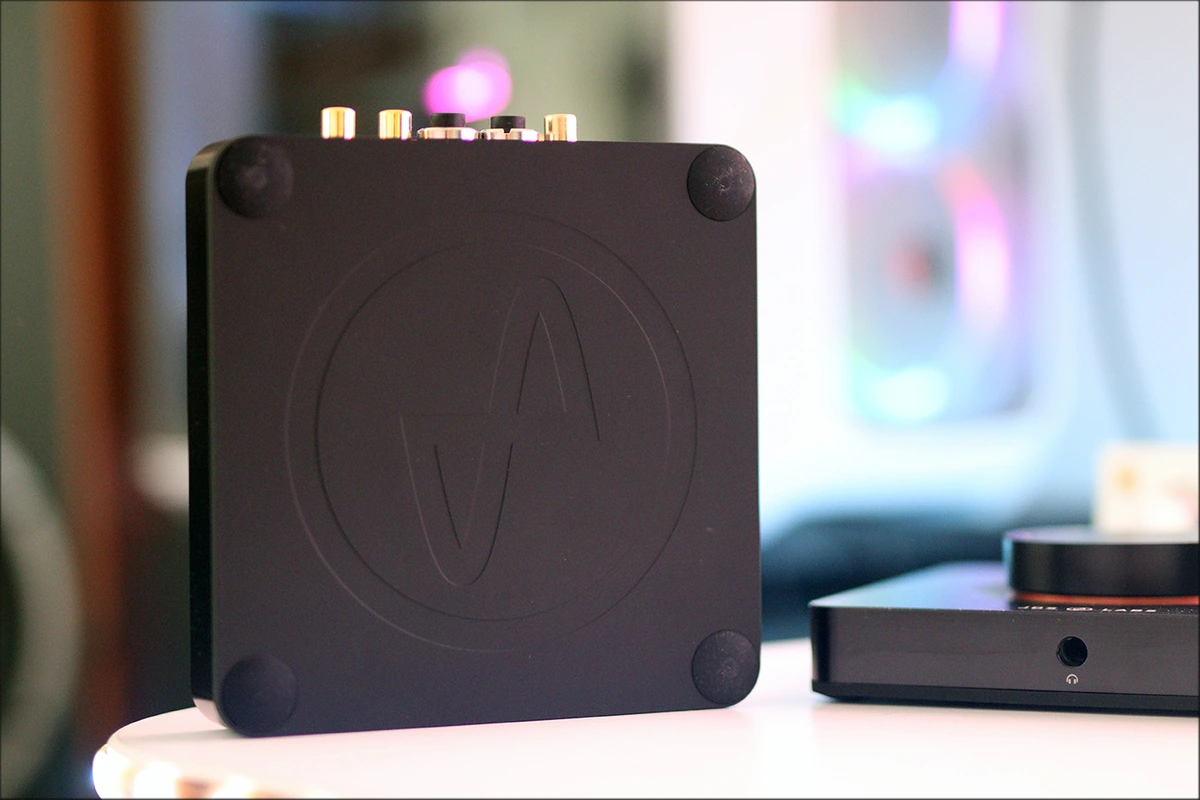
JDS Labs El DAC II+ vs HIFIMAN EF400 ($299 USD vs $599 USD) – The first comparison will be the hardest because I like both products, and while EF400 has a higher price, it has a few extra features that may come in handy. It is perhaps a better comparison between EF400 and EL DAC II+ and EL AMP II+, but the bottom line when comparing them came to me when I connected both to Cyrus One Cast as EF400 has some noise, digital, that EL DAC II+ does not have. Interestingly, I didn’t hear this noise when using EF400 as a DAC/AMP for driving headphones, it is only audible over the RCA outputs at the back. The noise is not audible if using EF400 with the balanced outputs, but that’s not available as an input for Cyrus One Cast. The sonic differences are also interesting, with the EF400 coming through as more colored in tuning than EL DAC II+, which is more neutral. EF400 has a specific sound that is either smooth, relaxed and laid back, if you go for the NOS mode, or strong, brighter, more dynamic and more punchy, if you go for the OS mode, and I’m talking about the DAC performance, not about the AMP performance of it. I like the fact that the EF400 has Type-C input, but EL DAC II+ comes with all the cables it may need. The bottom line for my usage and for my ears is that EF400 is a larger unit, has an internal power supply, but you need a computer that does not have a noisy USB output, while EL DAC II+ does not have volume control, which is a minus, but it has more inputs, and more outputs than EF400, has a lower price, and if you just need a DAC, it is simple to own and use. If you may need a DAC / AMP, the EL DAC + EL AMP combo is still less pricey than EF400, but with the caveat that you’d own two devices, occupy two power outlets, and there’s more cables than if having a single DAC/AMP like EF400.
JDS Labs El DAC II+ vs Pro-Ject DAC BOX DS ($299 USD vs $430 USD) – Starting with the design, EL DAC II+ has both single ended and balanced outputs, with better support for the inputs too. Surprisingly, both have low noise and both are clean in design, but the sonic comparison makes DAC BOX DS look really low resolution in comparison, as EL DAC II+ has almost infinitely better dynamics, a much wider soundstage, better clarity, better resolution, better control and much better instrument separation. In fact, somehow, it feels like Pro-Ject tuned the DAC BOX DS to sound as relaxing as possible, but sacrificed details in the process, while EL DAC II+ comes through as a more precise DAC, being much easier to recommend to virtually anyone looking for a good sound. There’s really no reason to go for DAC BOX DS at this point in time, as it is also cumbersome and larger than EL DAC II+, but if you want a really relaxing sound, it may be a good idea to check it out, while for a proper DAC with no distortion and a really flat signal, as it should have, EL DAC II+ is the one to go for.
JDS Labs El DAC II+ vs SMSL DO200 MKII ($299 USD vs $469 USD) – The whole function of DO200 MKII is higher, as it has more traditional XLR Balanced Outputs, and it also has a cleaner design, with a more traditional approach, and volume control but when push comes to shove, the overall resolution and sonic quality is higher on EL DAC II+, which has a more dynamic sound, a more neutral and cleaner presentation, with better detail and resolution, despite the lower pricing than DO200 MKII. You really need to take into account the simple design of EL DAC II+ though, as it does not have any bells and whistles, it is just a DAC with no volume control, while DO200 MKII will offer volume control. But if you’re here for sonics alone, EL DAC II+ sounds cleaner and more holographic to my ears, also it has lower background noise with about as much input as DO200 MKII.
Value and Conclusion
The value of JDS Labs El DAC II+ is superb, it has a good number of inputs, and the TRS Balanced variant has both a TRS Balanced Output, for which the cables are extremely common, especially in studio settings, but also RCA outputs, it can use both at the same time, with no degradation in sound, and it comes with its own power supply of a super high quality.
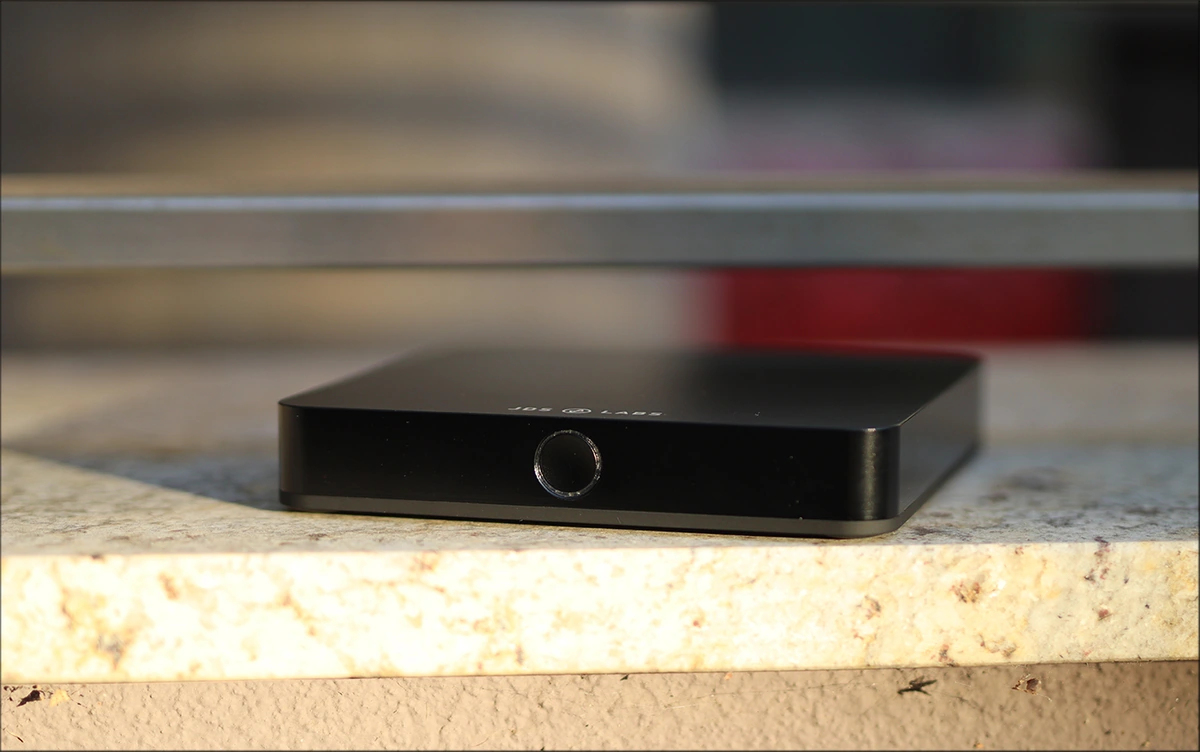
At the end of the day, if you’re looking for a simple yet effective DAC with USB, Optical and Coaxial inputs, with outstanding clarity, precision, extremely low noise levels, and with a superb build quality, and support from the creator, JDS Labs El DAC II+ Balanced is surely one of the best, purely American DAC I’ve heard to date, and a fully recommended option at 299 USD.
Product Link
You can grab one from www.amazon.com here: https://amzn.to/3U1ZOz6
If you’re in the UK, you can grab one from www.amazon.co.uk here: https://amzn.to/3OtuZ5w
And if you’re from Europe, you can grab one from www.amazon.de here: https://amzn.to/3VoJ8mP
--- Please remember to stay safe, and always have fun while listening to music!---
- If you have a dime to spare, please donate, and help us! It would make the day brighter for me and my wife-
Full Playlist used for this review
We listened to more songs than those named in this playlist, but those are excellent for identifying a sonic signature. I recommend trying most of the songs from this playlist, especially if you’re searching for new music! The playlists are different for Spotify, Tidal and Youtube, and based on the songs I enjoy and are available on each!
https://www.youtube.com/playlist?list=PL_cjBXGmwSHSdGcwuc_bKbBDGHL4QvYBu
https://open.spotify.com/playlist/5J3oloz8Riy9LxEGenOjQ0?si=979ba4f082414be7
https://tidal.com/browse/playlist/330fd544-8e5b-4839-bd35-676b2edbb3d5
--- Contact Us ---






I’m really impressed with the JDS Labs El DAC II+. Its higher resolution and better connectivity make it an excellent choice for audiophiles looking for a high-quality balanced DAC.
I’m really impressed with the JDS Labs El DAC II+. Its higher resolution and better connectivity make it an excellent choice for audiophiles looking for a high-quality balanced DAC.
[…] is lean, and you can place other devices on top if you absolutely must, and I tested this by having JDS Labs El DAC II+ Balanced on top, to test it against the S9C […]
Thank you so much for your detailed review! I decided to order one realy soon!